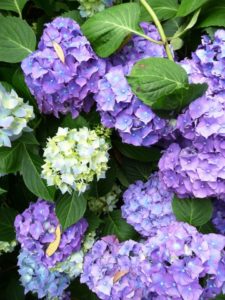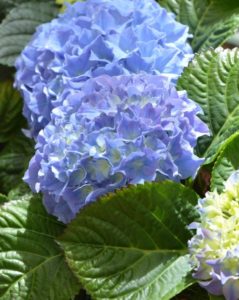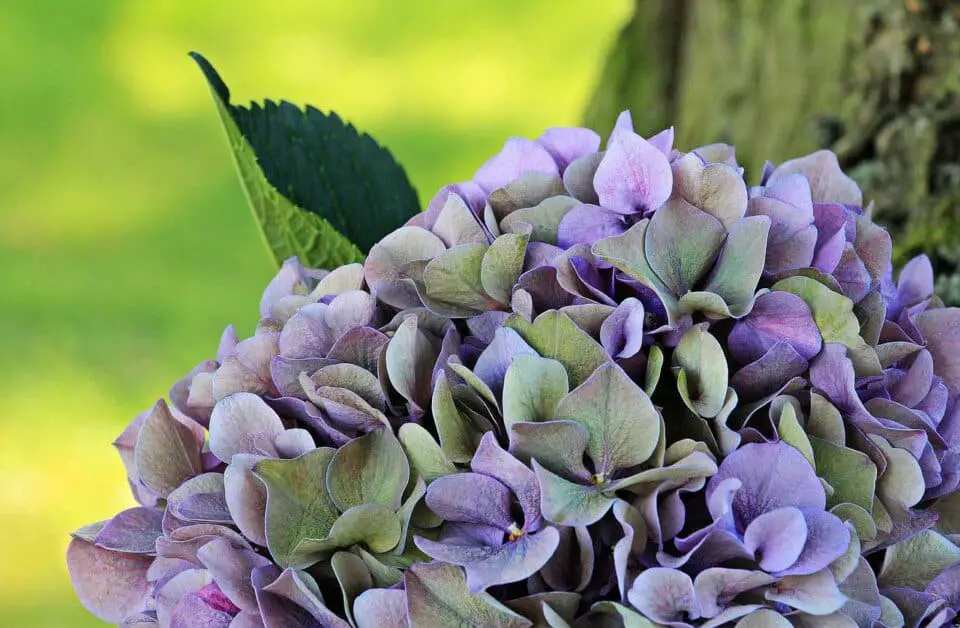Some links in the post are affiliate links and I get a commission from purchases made through some links found in the post.
As the fall comes all the plants and plant owners start preparing for the winter. Most plants in winter are dormant, therefore, the autumn period is very important for them.
The care you take for your hydrangea in the fall will greatly determines how the plant will survive over winter and be over spring. Therefore, it is important to prepare your beauty for the snow and cold weather.
Caring for your hydrangea over fall is very misunderstood. Many people think that they do not require a lot, but they do benefit from pruning and any type of protection that will help in winter.
To care for a hydrangea in the fall you need to know what variety of hydrangea you have. Old wood growth hydrangeas have a blooming period in summer. This can be pruned right after they finish flowering. If those are pruned in the fall, then the growth next season will be interrupted.
If you have a hydrangea specie that normally produces flowers in the fall, then they belong to the new growth types. Those ones can be pruned in the fall.
A little hydrangea fall preparation can help your plant to go over winter easier and thrive in spring. Therefore, in this article, we will discuss how you can care for your hydrangeas in the fall and will also mention some key points that will help.
What to do with a Hydrangea in the Fall
Pruning
 One of the most important things that many people wonder about is hydrangea fall pruning. Knowing whether to prune your particular kind of hydrangea in the fall or in the middle of summer is the first step.
One of the most important things that many people wonder about is hydrangea fall pruning. Knowing whether to prune your particular kind of hydrangea in the fall or in the middle of summer is the first step.
There are two different versions of hydrangeas. one that blooms on the old wood growth and the other one that flowers on new growth.
Old wood growth hydrangeas have a blooming period in summer. This particular one has to be pruned right after they finish flowering. If those ones will be pruned in the fall, then the growth next season will be interrupted.
If you have a hydrangea specie that normally produces flowers in the fall, then they belong to the new growth types. Those ones can be pruned in the fall right after the flowers disappear.
How To Properly Prune Hydrangea
The care for fall blooming hydrangeas and summer blooming hydrangeas is kind of similar in some ways. They all love the sun and require the same type of food.
However, the pruning needs may be different. Generally, this is about the pruning time and not the method itself.
You can prune your hydrangea plant at the bottom, where it has a weak and wispy growth. By doing so, you will stop them from taking up too much energy from the whole plant and new blooms.
look for any dead stumps. They won’t have sprung any buds or new wood from the original old wood. To totally remove the dead stems, cut them to the ground at the base. This will give the new growth underneath a chance to flourish.
To make way for new buds to emerge, old and dead blossoms must be eliminated. To promote flowers for the next summer, remove the flower head immediately above the first few leaves.
Observe the plant’s form from a distance. By pruning, you may form the shrub any way you like. Generally, spherical is the usual shape, but you can trim it however you like!
You may also like: How much water do hydrangeas need
What To Do With Hydrangea Fall Flowers
You have two choices after your hydrangea flowers turn brown, regardless of what color they are. Just below the bloom, you can either remove the dead flowers from the plant or leave them on it during winter.
The majority of dried hydrangea blossoms fall off sometime over the winter, and any that are still attached to the plant can be plucked in the spring.
Late August and early September are the best times to gather blue or pink flowers if you want to dry them and keep them like that.
Instead of the young, blue blossoms, cut the ones that have started changing colors and are transitioning into grey-lavender. They can be made into a flower wreath, placed in a dry vase, or hung upside down to dry.
Prepare Hydrangea For Winter
The climate where you live determines how you prepare for winter. First off, every fall, hydrangeas everywhere may profit from one thing:
Giving them additional help with the compost. If you put the compost in the base of plants.
It will not only protect the roots from the winter but also gradually supply them with nutrients that may be utilized for development and flowers the following year.
It is essential for Hydrangea fall care to put a covering on the soil. A new covering will be beneficial for hydrangeas whether you are in a region with harsh winters or one with milder ones.
In addition to protecting hydrangea roots from abrupt thaws and freezes, mulch can be also added.
Also, mulch aids in moisture retention. However, the amount of mulch that needs to be used is affected by the location of where you live.
If you live in a colder climate, it is recommended to use more mulch than when you live in hotter areas. The more mulch you need, the colder the climate.
If you add a few inches of mulch to the soil near the plant base, it will retain moisture in regions where it is extremely unusual for temperatures to fall below freezing.
 A 6-inch layer is more appropriate if you reside in a colder location with winters that experience below-freezing temperatures.
A 6-inch layer is more appropriate if you reside in a colder location with winters that experience below-freezing temperatures.
And if the temperature drops much lower in your region, cover the main base with an 8 to 12-inch layer.
Putting a little amount of fertilizer around the base of the plant can help your hydrangea to grow better in the new season. Therefore, Fall fertilizing is a fantastic idea.
Additionally, It’s always a good idea to rake up the fallen Hydrangea leaves. By doing this, the area around the hydrangea bush is less likely to attract illness and insects during overwintering.
This is because many small insects and organisms overwinter in fallen leaves. You have to watch out, especially for the Chilli Thrips that are often found on the leaves.
Final Thoughts
Hydrangea fall care is an important part of plant maintenance. If the treatment is done properly, then your hydrangea will thrive in the next blooming season and will make you happy with its beautiful foliage and flowers.
Generally, hydrangea fall care includes pruning, mulching, fertilization, and clean-up. However, those can be different in species of hydrangeas and also can change according to the location and climate.


